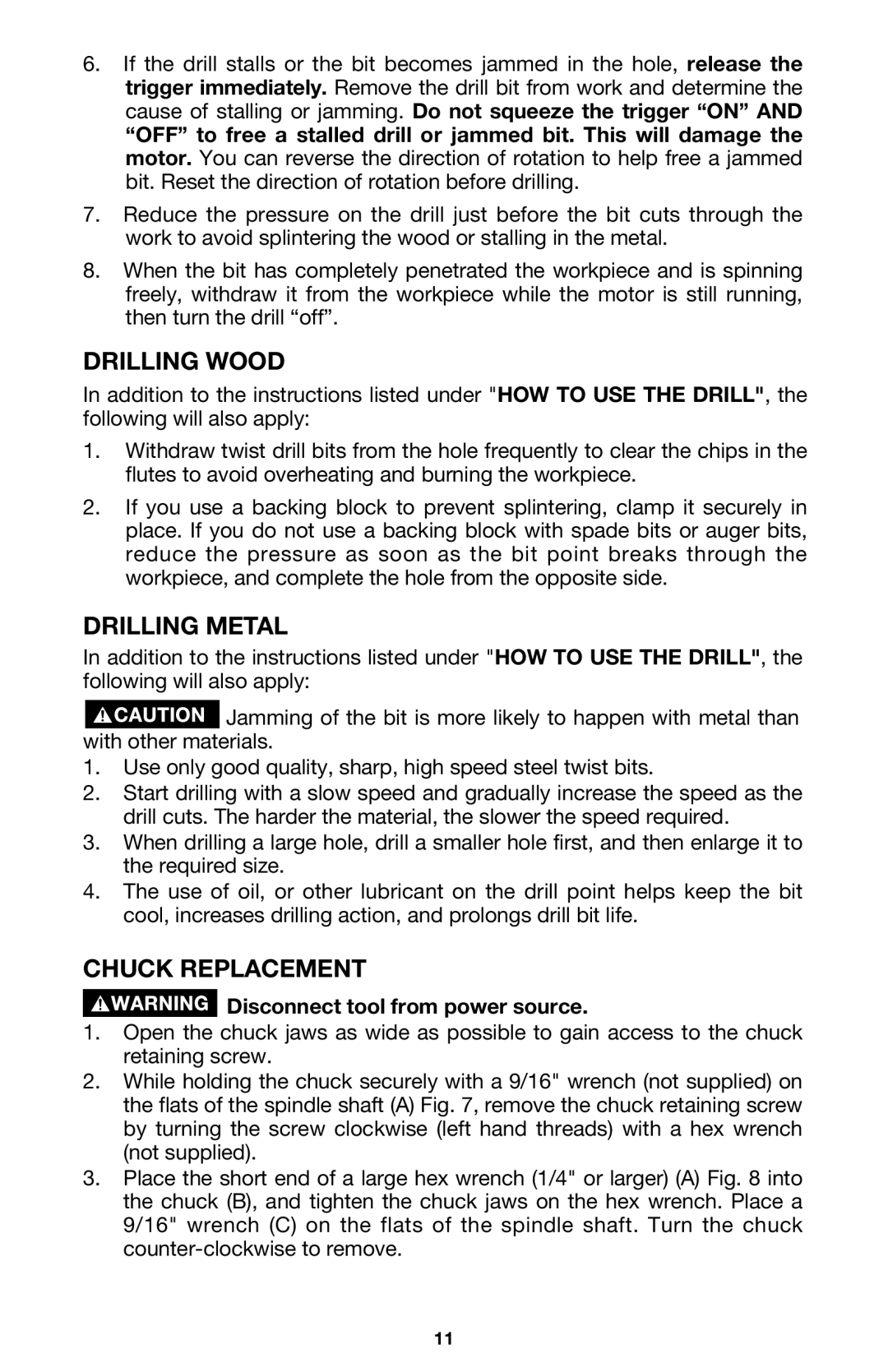6.If the drill stalls or the bit becomes jammed in the hole, release the trigger immediately. Remove the drill bit from work and determine the cause of stalling or jamming. Do not squeeze the trigger “ON” AND “OFF” to free a stalled drill or jammed bit. This will damage the motor. You can reverse the direction of rotation to help free a jammed bit. Reset the direction of rotation before drilling.
7.Reduce the pressure on the drill just before the bit cuts through the work to avoid splintering the wood or stalling in the metal.
8.When the bit has completely penetrated the workpiece and is spinning freely, withdraw it from the workpiece while the motor is still running, then turn the drill “off”.
DRILLING WOOD
In addition to the instructions listed under "HOW TO USE THE DRILL", the following will also apply:
1.Withdraw twist drill bits from the hole frequently to clear the chips in the flutes to avoid overheating and burning the workpiece.
2.If you use a backing block to prevent splintering, clamp it securely in place. If you do not use a backing block with spade bits or auger bits, reduce the pressure as soon as the bit point breaks through the workpiece, and complete the hole from the opposite side.
DRILLING METAL
In addition to the instructions listed under "HOW TO USE THE DRILL", the following will also apply:
![]() Jamming of the bit is more likely to happen with metal than with other materials.
Jamming of the bit is more likely to happen with metal than with other materials.
1.Use only good quality, sharp, high speed steel twist bits.
2.Start drilling with a slow speed and gradually increase the speed as the drill cuts. The harder the material, the slower the speed required.
3.When drilling a large hole, drill a smaller hole first, and then enlarge it to the required size.
4.The use of oil, or other lubricant on the drill point helps keep the bit cool, increases drilling action, and prolongs drill bit life.
CHUCK REPLACEMENT
![]() Disconnect tool from power source.
Disconnect tool from power source.
1.Open the chuck jaws as wide as possible to gain access to the chuck retaining screw.
2.While holding the chuck securely with a 9/16" wrench (not supplied) on the flats of the spindle shaft (A) Fig. 7, remove the chuck retaining screw by turning the screw clockwise (left hand threads) with a hex wrench (not supplied).
3.Place the short end of a large hex wrench (1/4" or larger) (A) Fig. 8 into the chuck (B), and tighten the chuck jaws on the hex wrench. Place a 9/16" wrench (C) on the flats of the spindle shaft. Turn the chuck
11
